Related Research Articles
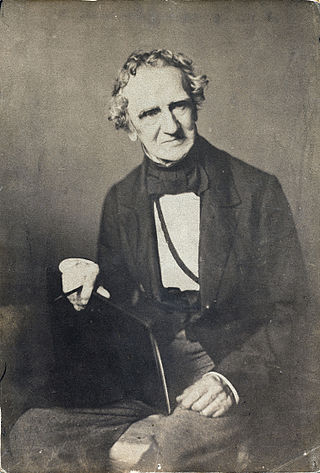
Thomas Sully was an American portrait painter in the United States. Born in Great Britain, he lived most of his life in Philadelphia, Pennsylvania. He painted in the style of Thomas Lawrence. His subjects included national political leaders such as United States presidents: Thomas Jefferson, John Quincy Adams, and Andrew Jackson, Revolutionary War hero General Marquis de Lafayette, and many leading musicians and composers. In addition to portraits of wealthy patrons, he painted landscapes and historical pieces such as the 1819 The Passage of the Delaware. His work was adapted for use on United States coinage.
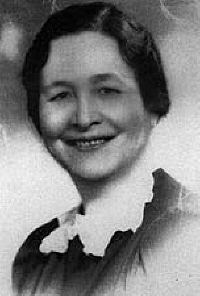
Ella Cara Deloria, also called Aŋpétu Wašté Wiŋ, was a Yankton Dakota (Sioux) educator, anthropologist, ethnographer, linguist, and novelist. She recorded Native American oral history and contributed to the study of Native American languages. According to Cotera (2008), Deloria was "a pre-eminent expert on Dakota/Lakota/Nakota cultural religious, and linguistic practices." In the 1940s, Deloria wrote a novel titled Waterlily, which was published in 1988, and republished in 2009.
Nakota is the endonym used by those Native peoples of North America who usually go by the name of Assiniboine, in the United States, and of Stoney, in Canada.
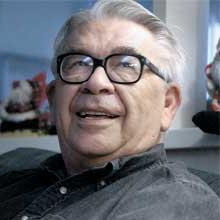
Vine Victor Deloria Jr. was an author, theologian, historian, and activist for Native American rights. He was widely known for his book Custer Died for Your Sins: An Indian Manifesto (1969), which helped attract national attention to Native American issues in the same year as the Alcatraz-Red Power Movement. From 1964 to 1967, he served as executive director of the National Congress of American Indians, increasing its membership of tribes from 19 to 156. Beginning in 1977, he was a board member of the National Museum of the American Indian, which now has buildings in both New York City and in Washington, DC, on the Mall.
Native American studies is an interdisciplinary academic field that examines the history, culture, politics, issues, spirituality, sociology and contemporary experience of Native peoples in North America, or, taking a hemispheric approach, the Americas. Increasingly, debate has focused on the differences rather than the similarities between other ethnic studies disciplines such as African American studies, Asian American studies, and Latino/a studies.
Deloria is a Native American surname, derived from the name of a French trapper, Phillippe des Lauriers, who settled and married into a Yankton community of the Dakota people, and may refer to:
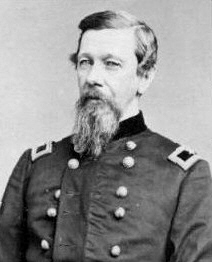
Alfred Sully, was a military officer during the American Civil War and during the Indian Wars on the frontier. He was also a noted painter.
Raymond J. DeMallie was an American anthropologist whose work focuses on the cultural history of the peoples of the Northern Plains, particularly the Lakota. His work is informed by interrelated archival, museum-based, and ethnographic research in a manner characteristic of the ethnohistorical method. In 1985 he founded and became the director of the American Indian Studies Research Institute at Indiana University Bloomington, alongside Douglas Parks, whom he worked collaboratively throughout majority of his career to preserve and translate various Indigenous languages, after having first met in 1980. Shortly after Parks started to work with DeMallie at Indiana University Bloomington. They got married in 2016.

The Oglala are one of the seven subtribes of the Lakota people who, along with the Dakota, make up the Očhéthi Šakówiŋ. A majority of the Oglala live on the Pine Ridge Indian Reservation in South Dakota, the eighth-largest Native American reservation in the United States.
Philip S. (Sam) Deloria is a member of the Standing Rock Sioux Tribe and active in Native American politics. He is of Yankton Dakota descent. The writer and activist Vine Deloria Jr. was his brother.
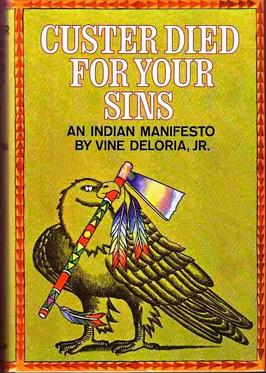
Custer Died for Your Sins: An Indian Manifesto is a 1969 non-fiction book by the lawyer, professor and writer Vine Deloria, Jr. The book was noteworthy for its relevance to the Alcatraz-Red Power Movement and other activist organizations, such as the American Indian Movement, which was beginning to expand. Deloria's book encouraged better use of federal funds aimed at helping Native Americans. Vine Deloria, Jr. presents Native Americans in a humorous light, devoting an entire chapter to Native American humor. Custer Died for Your Sins was significant in its presentation of Native Americans as a people who were able to retain their tribal society and morality, while existing in the modern world.

Playing Indian is a 1998 nonfiction book by Philip J. Deloria, which explores the history of the conflicted relationship white America has with Native American peoples. It explores the common historical and contemporary societal pattern of non-Natives simultaneously mimicking stereotypical ideas and imagery of "Indians" and "Indianness", in a quest for National identity in particular, while also denigrating, dismissing, and making invisible real, contemporary Indian people.
Beatrice Medicine was a scholar, anthropologist, and educator known for her work in the fields of Indigenous languages, cultures, and history. Medicine spent much of her life researching, teaching, and serving Native communities, primarily in the fields of bilingual education, addiction and recovery, mental health, tribal identity, and women's, children's, and LGBT community issues.

The Great Sioux Nation: Sitting in Judgment on America is a book edited by Roxanne Dunbar-Ortiz, "An Oral History of the Sioux Nation and Its Struggle for Sovereignty", that documents the 1974 "Lincoln Treaty Hearing". Testimony produced during that hearing has been cited by the International Indian Treaty Council in advocating for Indigenous sovereignty and treaty rights, efforts which eventually saw the 2007 Declaration on the Rights of Indigenous Peoples.
Jacqueline Keeler is a Native American writer and activist, enrolled in the Navajo Nation and of Yankton Dakota descent, who co-founded Eradicating Offensive Native Mascotry (EONM), which seeks to end the use of Native American racial groups as mascots.
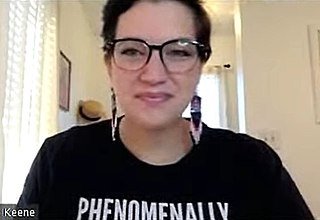
Adrienne J. Keene is a Native American academic, writer, and activist. A member of the Cherokee Nation, she is the founder of Native Appropriations, a blog on contemporary Indigenous issues analyzing the way that Indigenous peoples are represented in popular culture, covering issues of cultural appropriation in fashion and music and stereotyping in film and other media. She is also an assistant professor of American Studies and Ethnic Studies at Brown University, where her research focuses on educational outcomes for Native students.
Mary Sully (1896–1963) was a Yankton Dakota avant-garde artist. Her work was largely unknown until the early 21st century.
David E. Wilkins, a citizen of the Lumbee Nation, is a political scientist specializing in federal Indian policy and law. He is the E. Claiborne Robins Distinguished Professor in Leadership Studies at the Jepson School of Leadership Studies in the University of Richmond. He studies Native politics, governance, and legal systems, with a particular focus on Native sovereignty, self-determination, and diplomacy. Wilkins was a student of Vine Deloria Jr., coauthoring two books with Deloria and writing a book about his intellectual impact.
Clifford M. Lytle was a political scientist, scholar of Native American studies, and legal scholar. He was a distinguished university professor in the department of political science at the University of Arizona. He frequently collaborated with fellow University of Arizona political science professor Vine Deloria Jr.
St. Elizabeth's Boarding School for Indian Children was established in 1886 and remained in operation until 1967. It was located in the Wakpala area of the Standing Rock Reservation in South Dakota. This school was one of many schools established across the United States as part of an incentive to integrate Native Americans into the American Culture. St. Elizabeth's boarding school was one of the religious boarding schools from the Episcopal Church. The environment for education was harsh and difficult. Children were often forced to learn how to do manual labor and to abandon their culture. There were many prominent teachers and leaders at St. Elizabeths Indian School. Instructors like Mary Frances helped organize the children and keep the school running. There were also different school administrators over the years that had different strategies on how to instruct the children and also had different opinions on Native Americans. Daily life at this school was interesting and varied between the boys and the girls and what day of the week it was. One problem was that they lacked the resources to care for the children. The students would do manual labor to support the school. On Sundays they were expected to attend church services where they would sing hymns and read in their native language. This may have been the only opportunity for them to get a glimpse of their families, although they were not allowed to see them or talk to them. Sundays were also a more relaxed day where they could play and sleep longer. The education and focus of the curriculum was to help Native American Children assimilate as was the goal of the U.S. Government at the time. Students took classes like English, literature, and geography.
References
- 1 2 "Philip J. Deloria". U-M LSA American Culture. University of Michigan. Retrieved 30 June 2017.
- ↑ "The Making of Philip J. Deloria | Magazine | The Harvard Crimson". www.thecrimson.com. Retrieved 2020-02-27.
- ↑ "The American Philosophical Society Welcomes New Members for 2021". amphilsoc.org. May 7, 2021. Retrieved May 19, 2021.
- ↑ Harjo, Suzan Shown, ed. (2014). Nation to Nation: Treaties Between the United States and American Indian Nations. Penguin Random House. ISBN 9781588344793.
- ↑ "Facts on File History Database" . Retrieved 8 May 2014.
- ↑ "Native American women artists finally get their due in new Minneapolis exhibition". www.theartnewspaper.com. 30 May 2019. Retrieved 2019-11-10.
- 1 2 "Ella Deloria Archive" . Retrieved 8 May 2014.
- ↑ "The US-Dakota War of 1862". 25 September 2012. Retrieved 8 May 2014.
- ↑ "Journal of San Diego History" . Retrieved 8 May 2014.
- ↑ The WRITER'S STUDIO with Philip J. Deloria (2021, December ). Cambridge University Press.
- ↑ The WRITER'S STUDIO with Philip J. Deloria (2021, December ). Cambridge University Press.
- 1 2 3 "Philip Deloria, CV". Archived from the original on 18 October 2014. Retrieved 8 May 2014.
- 1 2 "University of Michigan" . Retrieved 8 May 2014.
- ↑ "Philip Deloria". history.fas.harvard.edu. Retrieved 2022-10-14.
- ↑ "Philip Joseph Deloria". Shekon Neechie. 2021-07-01. Retrieved 2022-10-14.
- ↑ "Merle Curti Lecture Series".
- ↑ Bolotnikova, Marina N. (2018-12-06). "Native Modern". Harvard Magazine. Retrieved 2022-10-14.
- ↑ "Library Thing" . Retrieved 8 May 2014.
- ↑ "Western History Association" . Retrieved 8 May 2014.
- ↑ "UPenn Libraries" . Retrieved 8 May 2014.